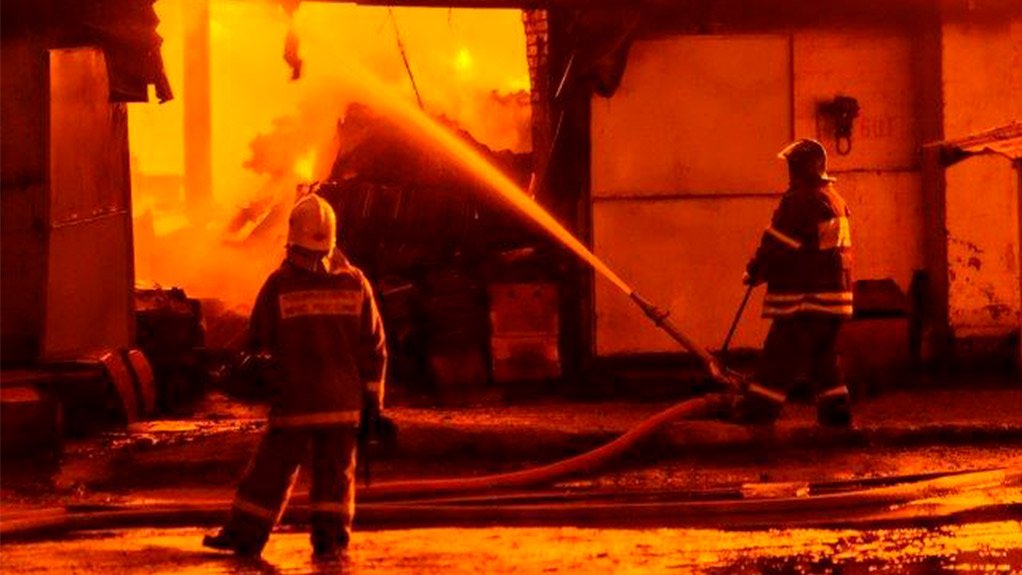The role of architectural review in rational design
This article has been supplied.
The qualitative review under rational design includes an architectural review, fire-safety objectives, fire hazards and risks, trial fire-safety designs, and worst-case fire scenarios for analysis. For example, consultants often ignore the building roof’s geometry, and the required substitute rectangular volume used in smoke-fill formulae.
All buildings in South Africa must comply with the requirements of the National Building Regulations and Building Standards Act, 1977 (Act No. 103 of 1977), Fire Protection, as set out in SANS 10400 Part T: 2011. Any digression from the prescriptive requirements requires a rational design.
This has to be completed in accordance with the fire engineering methodology framework requirements of BS 7974. The Application of Fire Safety Engineering Principles to the Design of Buildings, supported by the published documents, form an integral part of the BS 7974 framework.
A rational design is the performance-based design of fire safety and prevention mechanisms and strategies in a building in order to provide the same or better fire safety levels of the National Building Regulations, where the prescriptive requirements cannot be applied. This process is not elective, inasmuch as that only certain parts of the framework may be used, or that the results of the process are subjective or optional.
A rational design commences with a fire-risk consultant visiting the premises, or reviewing a set of new building plans, to undertake a comprehensive evaluation of all areas of the property to inspect all areas of fire safety and risk in detail, ASP Fire CEO Michael van Niekerk explains.
“Rational design takes into account the behaviour of a building during a fire, meaning the structure must be designed accordingly, thereby minimising any potentially devastating impact. Engaging a fire engineer at the earliest possible stage of the design can avoid costly fire protection systems by designing from the start with fire in mind.”
Following the qualitative review, the next step is quantitative analysis in accordance with BS 7974. Here the main focus is on the development of fire within the enclosure of origin, the spread of smoke, structural response and fire spread beyond the enclosure of origin, detection of fire and activation of fire-protection systems, fire-services intervention, and evacuation of occupants.
Assessment against criteria is the final step, where the fire-safety designs developed during the engineering analysis are assessed to ensure that the objectives established at the beginning of the process are, in fact, met.
Upon completion of the fire-risk assessment and drafting the rational design report, ASP Fire provides the client with practical actions to implement. The report comprises a detailed and documented objective fire-risk assessment, as well as fire-engineering calculations and analysis where required, covering all aspects of fire risk and safety.
“This guides the client in protecting its business, employees, and customers by providing prioritised recommendations for action, in order to rectify problem areas and strengthen existing fire-safety procedures. This also ensures that the client complies with fire-safety regulations for the protection of life, property, and the environment,” Van Niekerk highlights.
ASP Fire also works closely with insurance brokers and underwriters to address a client’s fire risk based on the outcomes of the fire-safety risk assessment report. This assists in preventing damage to property and products, loss of life, financial loss, consequential loss of profit, loss of productivity, and insurance repercussions.
Article Enquiry
Email Article
Save Article
Feedback
To advertise email advertising@creamermedia.co.za or click here
Comments
Press Office
Announcements
What's On
Subscribe to improve your user experience...
Option 1 (equivalent of R125 a month):
Receive a weekly copy of Creamer Media's Engineering News & Mining Weekly magazine
(print copy for those in South Africa and e-magazine for those outside of South Africa)
Receive daily email newsletters
Access to full search results
Access archive of magazine back copies
Access to Projects in Progress
Access to ONE Research Report of your choice in PDF format
Option 2 (equivalent of R375 a month):
All benefits from Option 1
PLUS
Access to Creamer Media's Research Channel Africa for ALL Research Reports, in PDF format, on various industrial and mining sectors
including Electricity; Water; Energy Transition; Hydrogen; Roads, Rail and Ports; Coal; Gold; Platinum; Battery Metals; etc.
Already a subscriber?
Forgotten your password?
Receive weekly copy of Creamer Media's Engineering News & Mining Weekly magazine (print copy for those in South Africa and e-magazine for those outside of South Africa)
➕
Recieve daily email newsletters
➕
Access to full search results
➕
Access archive of magazine back copies
➕
Access to Projects in Progress
➕
Access to ONE Research Report of your choice in PDF format
RESEARCH CHANNEL AFRICA
R4500 (equivalent of R375 a month)
SUBSCRIBEAll benefits from Option 1
➕
Access to Creamer Media's Research Channel Africa for ALL Research Reports on various industrial and mining sectors, in PDF format, including on:
Electricity
➕
Water
➕
Energy Transition
➕
Hydrogen
➕
Roads, Rail and Ports
➕
Coal
➕
Gold
➕
Platinum
➕
Battery Metals
➕
etc.
Receive all benefits from Option 1 or Option 2 delivered to numerous people at your company
➕
Multiple User names and Passwords for simultaneous log-ins
➕
Intranet integration access to all in your organisation





















